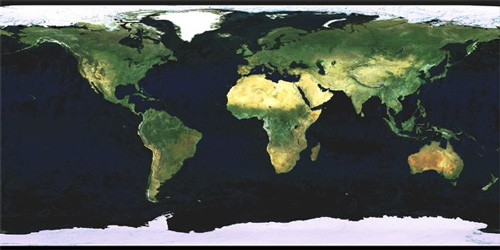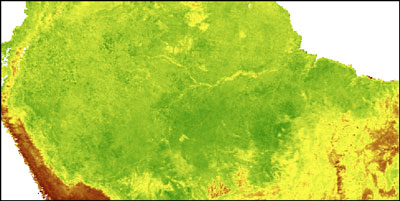
This issue in pdf Subscription Archive: Next issue: July 2005 |
|
|||||||
e-Collaboration and Grid-on-Demand Computing for Earth Science at ESAby Luigi Fusco, Veronica Guidetti and Joost van Bemmelen Information and Communication Technologies (ICT) have proven to be key instruments in activities targeted at protecting the environment and its integration in sustainable development policies. The European Space Agency (ESA) considers GRID computing capabilities as powerful tools to manage large volumes of Earth observation data and provide the Earth Science community with on-demand services. ESA is currently involved in several projects requiring a Grid infrastructure to support e-collaboration and digital library applications. One of the key requirements faced by the earth and environmental science community is to improve collaboration across the many geographically-distributed research groups and enable them to share data acquired by diverse means (ground, airborne and satellite), computational and storage resources, knowledge, experimental results. Complexity is caused by the fact that:
The Grid and emerging e-collaboration computing services are considered as powerful new instruments, enabling and strengthening remote collaboration among researchers. For example, a Grid-based infrastructure can permit alternative approaches to access and exploit large data sets. Instead of traditional remote sensing data ordering and delivery from the acquisition/storage facilities to the user sites, user specialised processing modules could be located wherever data and computing resources are available. Specific on-demand data products, based on the best user-defined parameters, could then be generated or retrieved from archives and downloaded in real-time. Such services can be available via the web to members of a virtual thematic community, using the emerging Web Services standards. The European Space Agency at the ESRIN site (Frascati, Italy) has the mandate to acquire, process, archive and distribute data coming from the Earth observation satellites operated in Europe, organised in a fully distributed network of facilities all over Europe. The ESA historical archive already includes some 2 PetaBytes of data and the flagship ENVISAT mission, launched in 2002, is increasing this data holding by some 400 TeraBytes per year. In recent years, ESA-ESRIN has experimented with the Grid and is currently involved in several applications and projects ranging from e-collaboration to the organisation of information in ad-hoc digital libraries, organised around the established Grid infrastructure. ESA intends to adopt the Grid computing philosophy for handling the instrument data of future Earth observation missions. Grid-on-Demand Specific Applications
Grid on-Demand supports scientific applications for future large ENVISAT data set access. Together with the high-performance processing capability of the Grid, it provides quick accessibility to data, computing resources and results. Figure 2 shows support for a science group interested in new algorithm development and fast validation of results.
The power of the Grid infrastructure will help to process and manage large amounts of satellite images, thus forming the basis for long term data preservation, while digital library common functionality and third party applications will allow the users to retrieve, analyze and manage the contents, the services and the virtual organisation. e-Collaboration Concluding Remarks For the Earth science community, it is important to continue and invest in activities focussing on Grid and e-collaboration. Initiatives such as ESA Grid-on-demand and projects like THE VOICE are demonstrating their relevance. These projects show that a Grid-based underlying infrastructure is a real asset for this community. It significantly improves the accessibility and usability of Earth science data, information and knowledge, and the way Earth science users collaborate. Links: Please contact: |
|||||||



